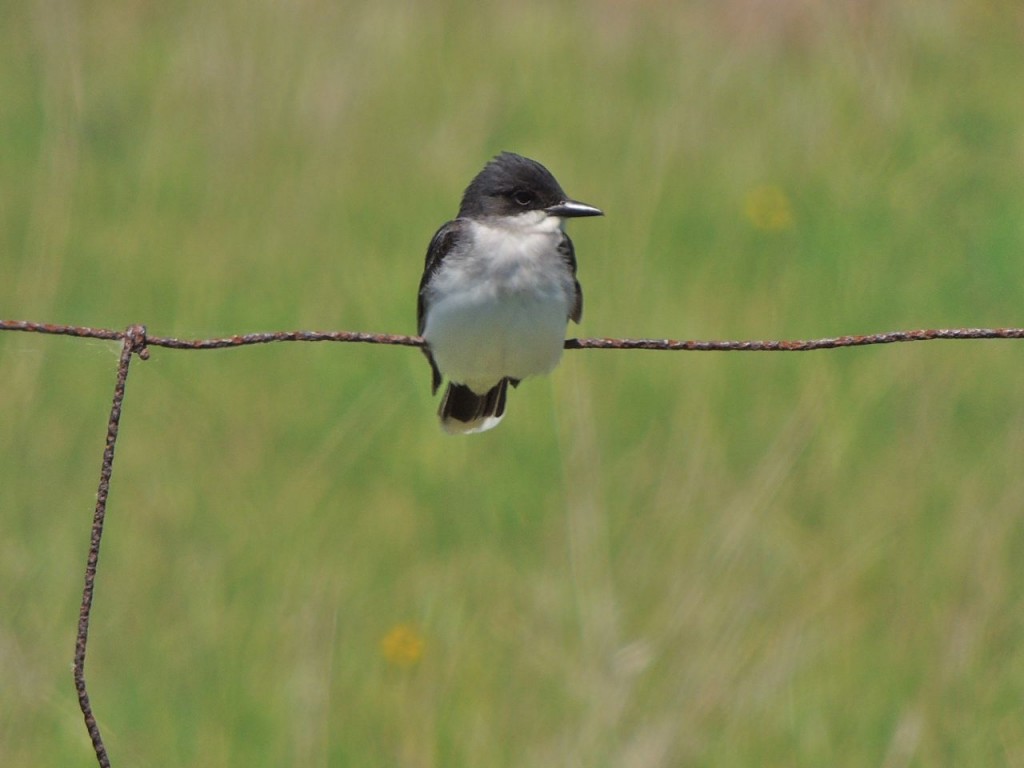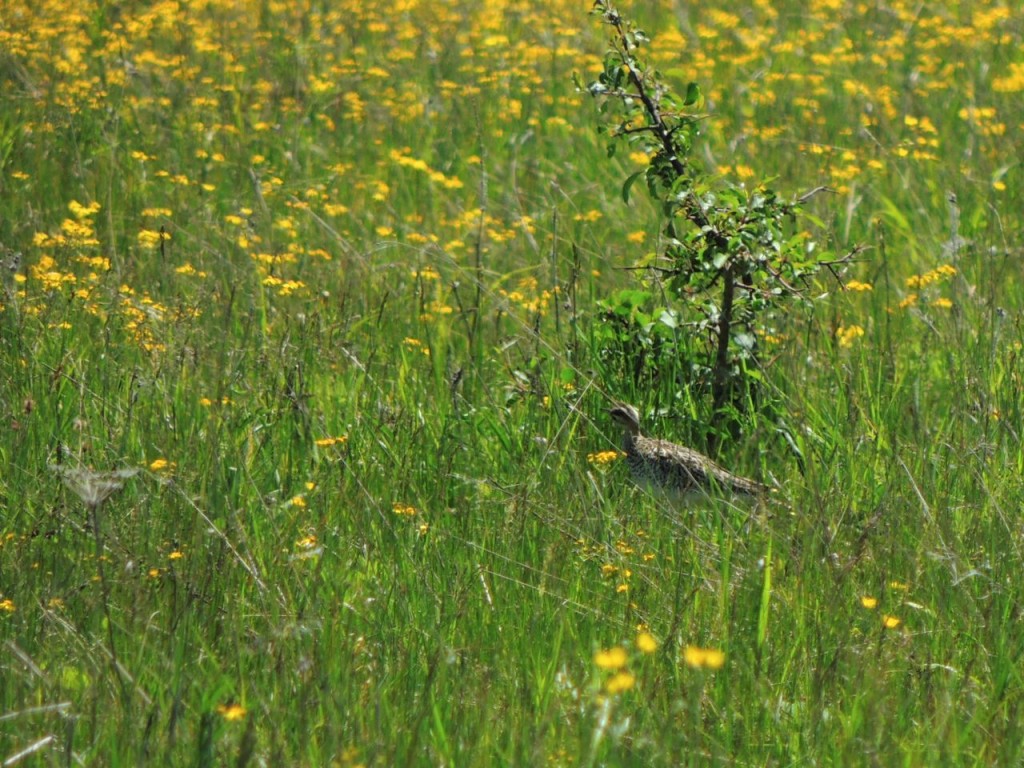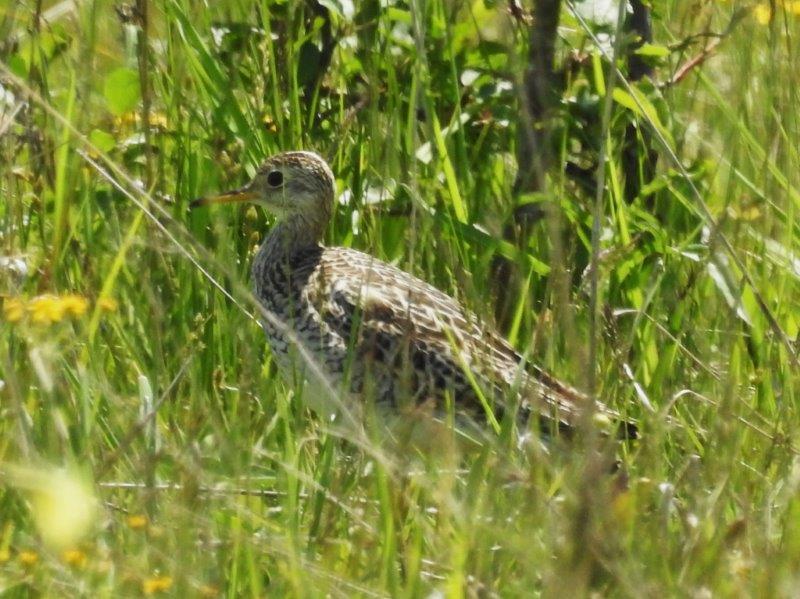3 June 2015. Kirkfield ON. Three of us spent half the day scouring open grasslands for birds. We were looking for Loggerhead Shrikes; but without luck as it turned out. We weren’t unduly disappointed though because grasslands are really delightful spring birding places; open pastures attract some to the most vocal songbirds.
Our day turned up some nice sightings: Wilson’s Snipe, Willow Flycatcher and Brown Thrasher included. The various songsters of the day find their own best spots from which to sing. Among those we saw were: bright yellow-breasted Eastern Meadowlarks who prefer a high wide-vista spot, roadside utility wires do the trick; Bobolinks who like deep grass cover so tend to stay hidden until the handsome black, white and yellow males emerge like a Jack-in-the box to fly a short looping and fluttering territorial flight to let everyone know who’s in charge; Savannah Sparrows who like fence posts while Grasshopper Sparrows apparently don’t need to broadcast their faint, short-burst, buzz song all that far, they are content with a modestly prominent grass stalk as long as it will take their weight.

After dutifully completing our Shrike-watch rounds we headed home but made a long detour to inspect more open fields. And it was here that we found our Upland Sandpipers. It was really promising countryside for Upland Sandpipers: wide fields, dry-ish but punctuated by low wet spots, decrepit hedges and occasional thickets of hawthorn.
We had stopped and were straining to admire something to our left, an Eastern Kingbird I think, when I heard –or at least thought I heard – the ululating whistle of an Upland Sandpiper to our right. We scrambled to the other side of the car and scanned the deep grasses and soon found one, then two, three and eventually four of them about a hundred feet away moving across in their jerking, stop-go way of stalking with precautionary safety stops to peer around. Upland Sandpipers stand about ten inches tall and have a preference for eight inches high grass, many times, all you see is their rather disproportionately small head bobbing around.
I’ve posted about Upland Sandpipers several times before, simply because I like them so much; they’ll rise to the top of any day of birding. Almost everything about them: the incongruity of a sandpiper making a living in dry fields (they are typically species of puddles and shorelines) : their funny, little, chicken-like heads; their wolf-whistle of a song (described cleverly by Pete Dunne in his excellent Essential Field Guide Companion as “..a plaintive, rising-and-falling, slurred whistle: “woooolEE WEEurr.”); and especially for their innocent and engaging ‘Who me?” expression.

For one of my companions, the Upland Sandpiper was a lifer bird; I know the excitement of that feeling: you’ve read about them; you’ve heard about them and others tell you where they just saw one – but too late; then one day, sometimes without warning, the final piece of the puzzle drops into place. Here’s her picture of that lifer.
